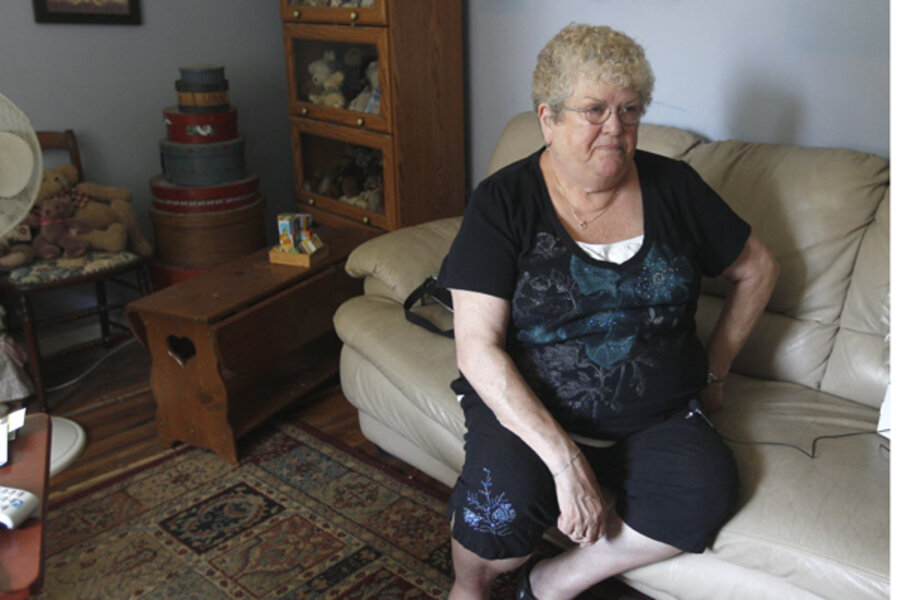Bullied bus monitor: Case of Karen Klein spotlights problem on school buses
The shocking YouTube video of students verbally abusing monitor Karen Klein highlights how difficult it can be to handle bullying in a place where it often happens: the school bus.
The good news is that better training is making its way to thousands of bus drivers and monitors across the country – and school administrators may now be more inclined than ever to take seriously drivers’ reports of taunting, sexual harassment, and other forms of bullying against kids and adults.
First Student, a company that transports 6 million students a day, launched a campaign this past school year – “See Something. Do Something.” – to train all its drivers and attendants, more than 59,000 people.
The workshops teach bus drivers how to recognize signs of bullying and strategies for responding – once they’ve stopped the bus in a safe location. They present hypothetical scenarios to help them practice deescalating aggressive behavior.
The training materials are available more broadly and were developed jointly by the US Department of Education’s Office of Safe and Drug Free Schools and the National Association for Public Transportation (NAPT).
“The NAPT [is] prepared … to engage at a higher level than ever before in the dialogue about what school districts and communities are doing about bullying prevention, particularly on school buses,” said executive director Michael Martin, in a written statement in the wake of the Karen Klein incident.
Thirty-two percent of students ages 12 to 18 who said they were bullied in a 2006-07 survey, and of those, 8 percent said they were bullied on a bus, according to the training materials. Other studies suggest it’s even more widespread.
One study based on interviews with 30 bus drivers from four school districts found that 90 percent of them noticed verbal bullying on their buses, and 70 percent noticed physical intimidation. Thirty percent said bullying occurred often on their buses and they stopped frequently to intervene, according to the 2008 research by Ellen deLara, an associate professor at Syracuse University’s School of Social Work.
“Kids talk about this venue as the worst part of their day,” Ms. deLara says. “Most [buses] don’t even have a monitor in the first place, which leaves the driver trying to transport the students safely and attend to any bullying that’s happening behind him or her…. Anything that brings further education to the bus drivers would be useful…. They really want to have a safe bus and a dignified environment.”
One reason drivers suggested that students are bullied on the bus is that their peers can see where they live – and often it’s those who live in very poor conditions, and may be sent to school in dirty clothes, for instance, who receive the most abuse.
More state laws are kicking in that require all school staff, including bus drivers, to formally report bullying. But drivers are often frustrated when they inform school administrators about problems on the bus and there seems to be little follow-up.
In deLara’s study, about a third of drivers said school administrators were not supportive of their efforts to control bullying.
“There needs to be increased attention paid at the school-building level when a driver indicates there’s a problem,” says Peter Mannella, executive director of the New York (State) Association for Pupil Transportation. “They see and hear things others won’t hear.”
The roughly 50,000 drivers and 10,000 monitors in New York State have received antibullying training developed by state education officials and his group, Mr. Mannella says.
The Karen Klein incident indicates “we’ve got work to do with kids to engender a sense of respect for each other and the people driving or monitoring the bus to try to keep them safe,” Manella says. And it’s prompting people in his organization to ask, “What are we missing in training that might have helped in that situation?”
Parents, too, need to take some responsibility for student behavior, bus drivers say. “I would like to know how to get parents to take ownership of their child’s negative behavior and work from there,” one driver told deLara.
It’s not clear how common it is for drivers or monitors to be verbally or physically abused by students. But the Klein case wasn’t the first. In perhaps the most severe example, a 14-year-old boy in Tennessee murdered his school bus driver after she reported his use of smokeless tobacco, according to deLara’s research.
For the more everyday forms of bullying and violence, the “See Something. Do Something.” campaign offers such strategies as:
• Don’t use the rearview mirror for stare-downs with a misbehaving child or attempt to discipline students on the bus. Driving the vehicle safely is the first priority.
• Assign seats, sometimes based on age groups or guidance from school officials about students who may be vulnerable.
• After verbal warnings, stop the bus and have bullies or bullied students change seats.
• Call dispatch or school supervisors according to school policy. Sometimes students will stop the behavior upon hearing that call.
• Talk with the bullies and/or the bullied students individually after the bus has stopped.
• Report incidents of bullying in writing.
The training materials, available at safesupportiveschools.ed.gov, also include strategies for creating a positive climate on buses to prevent bullying in the first place.
School districts are being surveyed to see how widely the materials have been used, but on the website they get about 240 visits a month, and some districts have given good feedback after incorporating them into their training, says David Esquith, director of the Office of Safe and Healthy Students in the US Department of Education.







